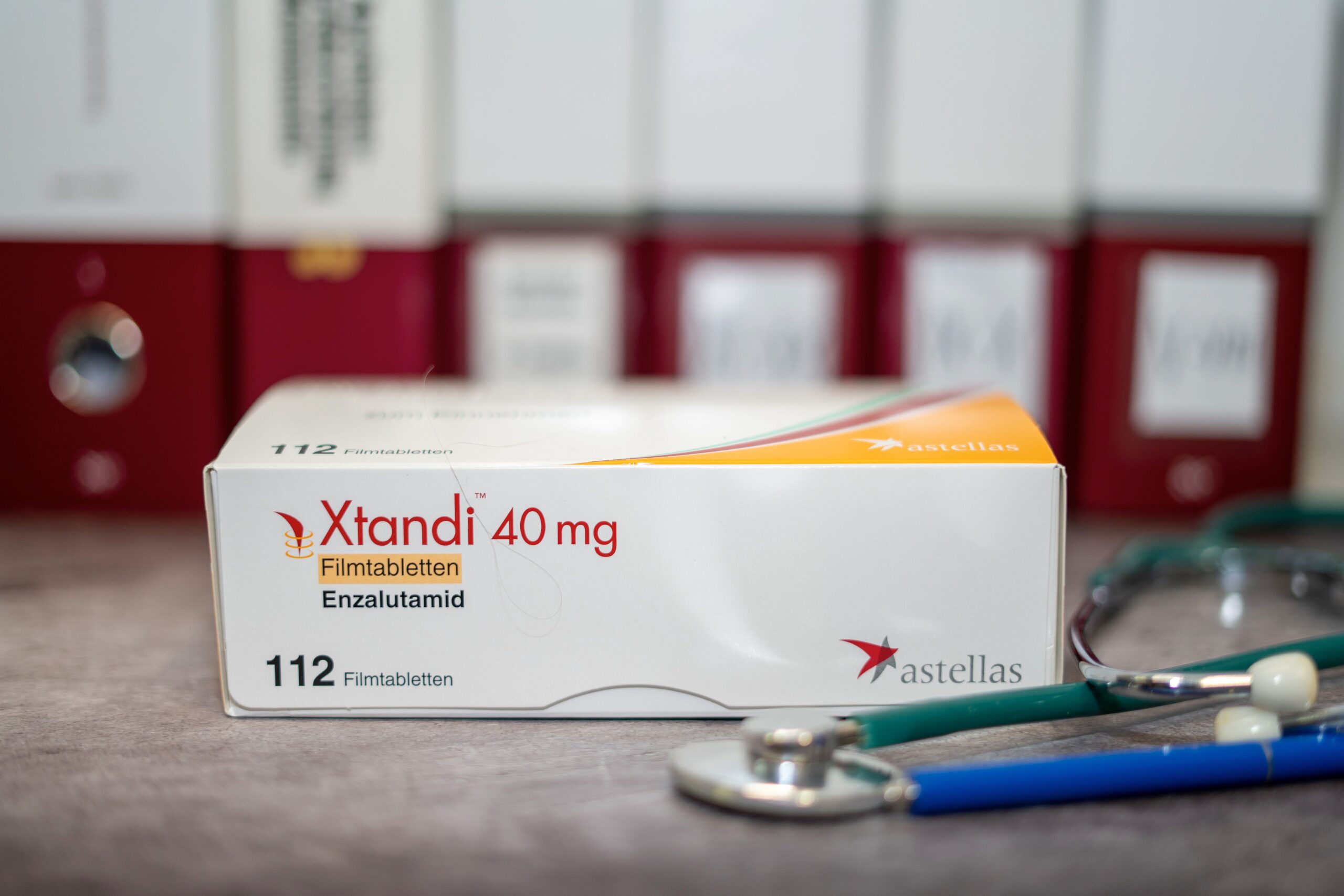Pfizer and Astellas have released topline results from the phase 3 EMBARK trial, demonstrating that enzalutamide (Xtandi; Pfizer, Astellas) combined with leuprolide significantly improves overall survival (OS) and confirms previous metastasis-free survival benefits in men with non-metastatic hormone-sensitive prostate cancer (nmHSPC) experiencing high-risk biochemical recurrence (BCR).1
Image Credit: omar | stock.adobe.com
In the trial, 1068 men with rising PSA post-curative therapy with PSA doubling time less than or equal to 9 months and serum testosterone greater than or equal to 150 ng/dl were randomized 1:1:1 to receive enzalutamide 160 mg daily plus leuprolide, enzalutamide alone, or placebo plus leuprolide.2 The enzalutamide plus leuprolide arm achieved a key secondary OS endpoint, showing statistically significant improvement over placebo plus leuprolide.1
Previously, at a median 60.7 months of follow-up, the enzalutamide combination reduced the risk of metastasis or death by 58% versus leuprolide alone, with enzalutamide monotherapy reducing that risk by 37%.2 The new OS data build upon this foundation and mark this regimen as the first ARSI-based treatment to show an OS benefit in HSPC BCR1,3
Safety data from EMBARK indicate no new adverse effects or grade 3 to 4 toxicities with the enzalutamide combination or monotherapy compared with known profiles. Common reactions included hot flashes, fatigue, arthralgia, and gynecomastia. Seizure incidence remained unchanged and low, aligning with prior studies. Notably, OS data did not introduce additional safety concerns, reinforcing enzalutamide’s tolerability.
Quality of Life Insights
Enzalutamide, a second generation androgen receptor signaling inhibitor (ARSI), impedes AR nuclear translocation and DNA binding, complementing androgen deprivation therapy via leuprolide.1 In post-hoc analyses, scheduled treatment suspensions demonstrated stable urinary function and sexual health, supporting intermittent therapy’s role in maintaining quality of life.4
Additionally, testosterone recovery data from week 36 showed 82% recovery in combination-treated patients (median recovery 8.3 months), compared with 5.9 months in the placebo leuprolide arm.3 These findings may guide future intermittent treatment paradigms to reduce long-term endocrine adverse effects.
Clinical Relevance
Biochemical recurrence is estimated in 20 to 40% of men within 10 years of definitive therapy, with 90% progressing to metastatic disease and approximately 1 in 3 dying from prostate cancer.3 EMBARK’s OS benefit represents a significant clinical shift establishing a regimen that not only postpones metastasis but also enhances survival outcomes before detectable metastases.
Given that enzalutamide plus leuprolide is now FDA approved for nmHSPC with high-risk BCR, presentation of full OS, hazard ratios, subgroup analyses, and safety details at major oncology conferences is anticipated.1 These data are expected to refine treatment algorithms and support earlier intervention.
Considerations for Pharmacists
Pharmacists play an increasingly vital role in optimizing enzalutamide therapy, especially within the evolving treatment paradigm for high-risk nonmetastatic biochemical recurrent prostate cancer. Pharmacists can begin by educating patients on enzalutamide’s demonstrated benefits in delaying disease progression and extending survival. Monitoring for adverse effects is another cornerstone for pharmacist involvement. Enzalutamide is associated with fatigue, hot flashes, gynecomastia, and potential cardiovascular or skeletal risks. Pharmacists can routinely assess patients for these issues, collaborate with oncology teams to manage symptoms, and recommend interventions such as bone-strengthening agents or cardiovascular risk monitoring when appropriate.
